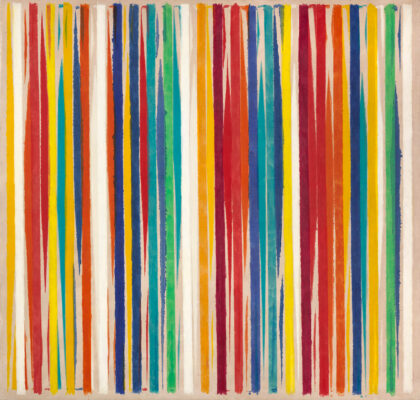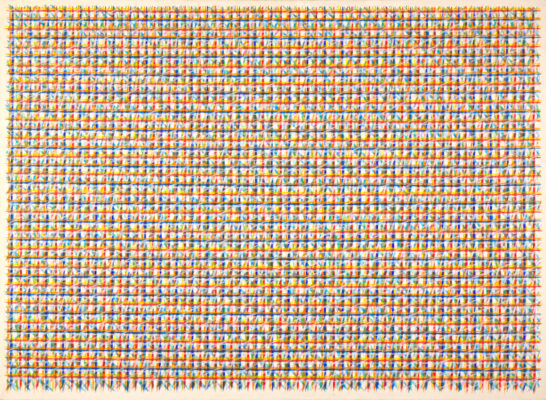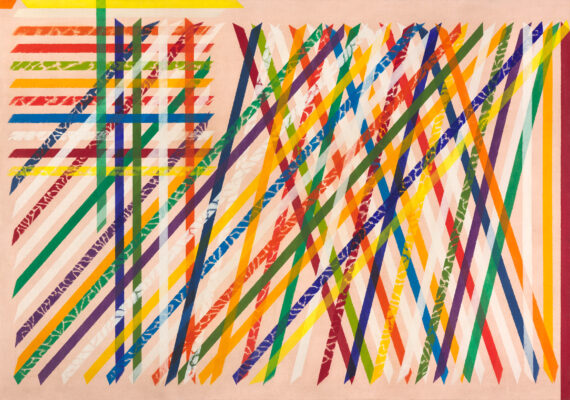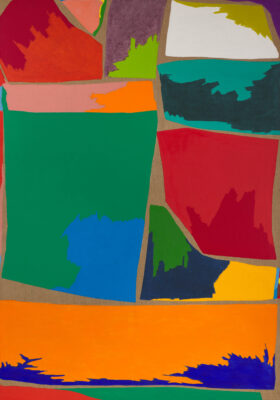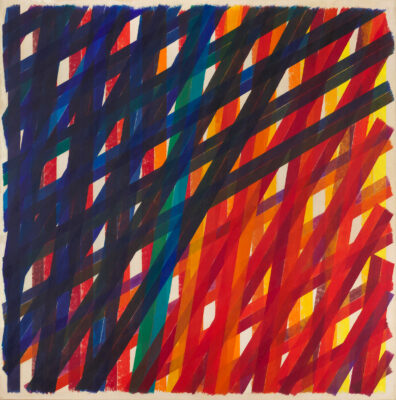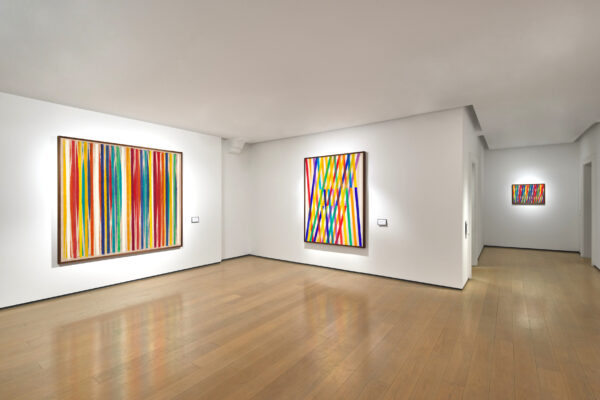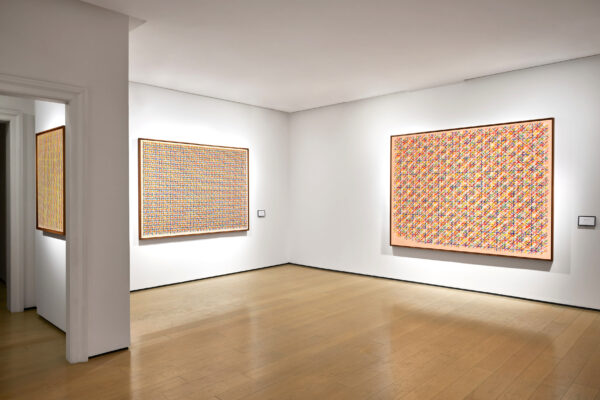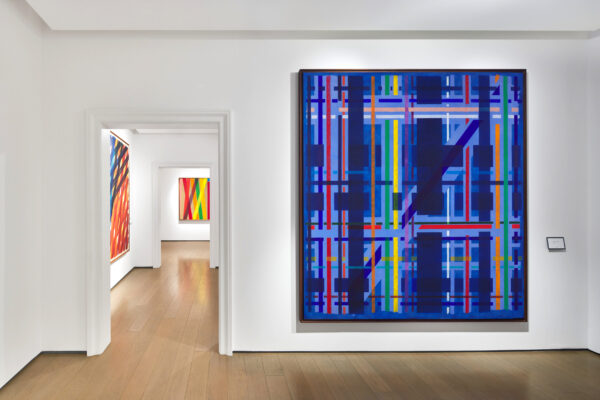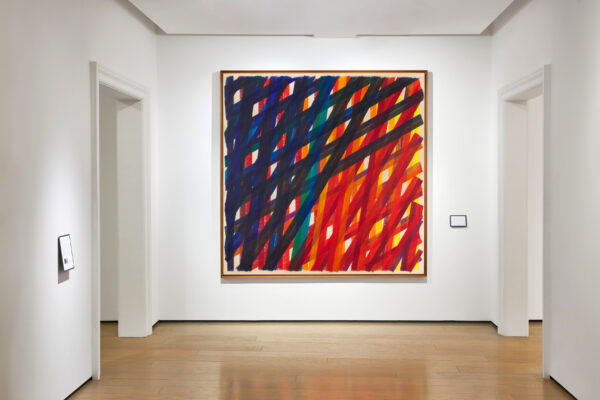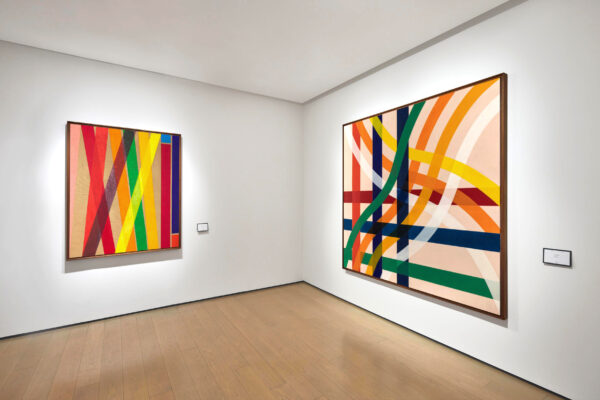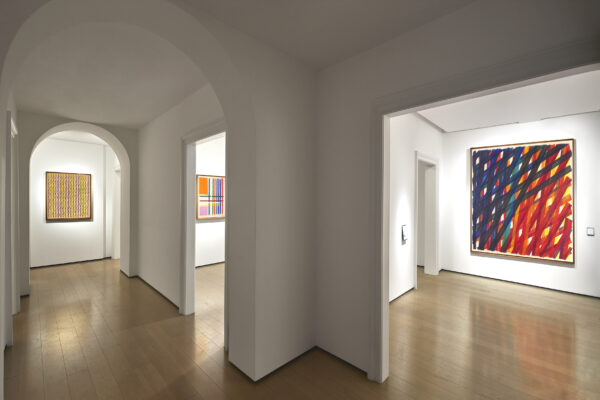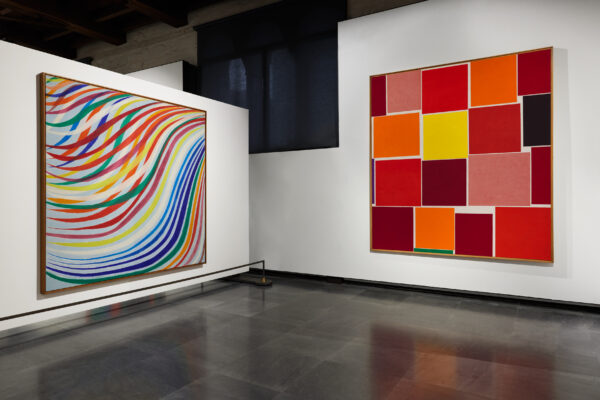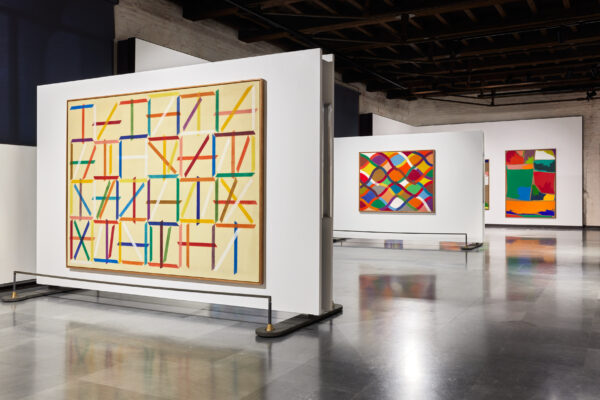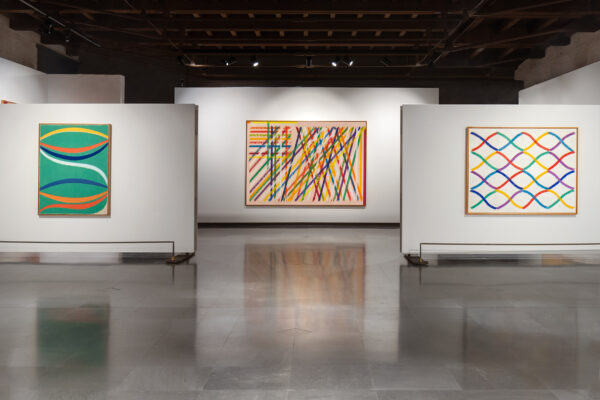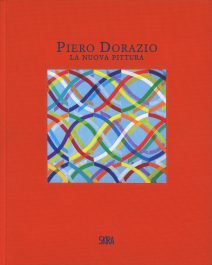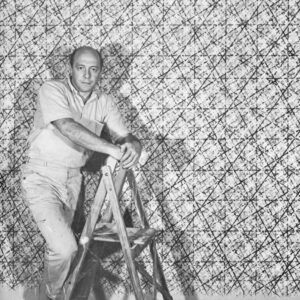Home / Exhibitions / Piero Dorazio, la nuova pittura works 1963-1968
Piero Dorazio, la nuova pittura
works 1963-1968
curated by Francesco Tedeschi
18.12.2022 — 30.04.2023
Piero Dorazio
la nuova pittura
curated by Francesco Tedeschi
18.12.2022 - 30.04.2023Show introduction
Colour is the protagonist of space and form in the exhibition dedicated to Italian painter Piero Dorazio, one of the leading representatives of European Abstractionism.
Set up in the exhibition spaces of Galleria d’Arte Moderna Achille Forti and Galleria dello Scudo, the rigorous scientific exhibition is centred on a selection of over thirty paintings from the artist’s heirs and from public and private collections.
The exhibition presents an unprecedented cut and deals with the Italian painter’s production between 1963 and 1968, when the reticular structure of his works dated 1959-1962 gives way to a new compositional system, the result of an investigation into the ways in which colour becomes the protagonist of space and form, when his research manifests a renewed inventive freedom. These are the years of Pop Art and social contrasts animating the younger generations, hints that Dorazio takes up and relaunches in a painting understood as a field of tensions and inventions, albeit in correlation with the references to the historical avant-gardes – Futurism, Kazimir Malevič’s Suprematism and Piet Mondrian's Neo-Plasticism – and with the artistic and theoretical production of his recent past.
The exhibition symbolically opens with Presente e passato – a work from 1963 in which the interweaving of sign is overcome by the drafting of polychrome bands in a dense vertical sequence – to continue with large canvases built according to geometries that expand past’s luminous textures towards always different and multiple compositional possibilities. Proofs of this are Cercando la Magliana from 1964 and Balance and counterbalance of the following year. In those years, while teaching at the University of Pennsylvania, Dorazio is at the core of a lively international debate related to the cultural environment in New York, where his research is supported and promoted by the Marlborough-Gerson Gallery, also operating in Rome and London.
To consolidate his relationship with the protagonists of the American art scene are the invitations addressed to some of them – Helen Frankenthaler, Franz Kline, Robert Motherwell, Barnett Newman, Kenneth Noland, Jules Olitski, Ad Reinhardt, Clyfford Still – to participate in the educational activities planned by the department he directed. The knowledge of his work in the United States is favoured by his exhibiting in The Responsive Eye, the great show at the Museum of Modern Art in New York which, at the beginning of 1965, joined together the protagonists of the movement known as “Color Field”, as well as the solo exhibition, with eighteen paintings and a hundred prints and works on paper, at the Cleveland Museum of Art in September of the same year. This will be followed by the participation in the International Exhibition of Contemporary Painting and Sculpture in Pittsburgh in 1967, and in other group exhibitions that will confirm him in the foreground of critic, above all the American one.
Dorazio’s oeuvre between 1963 and the end of the decade is a “new painting”. He breaks the cage of the “Trame” to shift towards different, multiple paths destined to produce results whose resonance will be felt even after years. A painting that openly confronts with what is proposed by an international context of which Dorazio is the protagonist in his own right, having established and cultivated relationships that always place him at the centre of the scene.
The investigation then continues, documenting the different directions towards which his research opens – from the regular, dense but clearly legible grid in My Best from 1964, to the construction of the most varied structures to reaffirm the architectural vocation of new canvases dated 1965, like Teodorico guarda in fretta or Another Way, up to the fluidity of the curved line, protagonist between 1965 and 1966 in works such as Endless Federico (I) (per Federico Kiesler) and Din Don (Omaggio a Giacomo Balla n. 2). All these solutions denote the desire to free himself from the insistent adherence to a single reason, to move towards other operational hypotheses, each conceived as a possible beginning.
An important event, to which the current exhibition pays particular attention, is the solo room at the 33th Venice Biennale in 1966, which includes 21 works among the most significant of that time, many of which included in this project, such as Allaccio, Tutto a punta, Ottimismo-pessimismo (a Giacomo Balla) and Tranart (a Gino Severini), all from that year. The exhibition ends with Litania, Sorteggio, a painting acquired by the then director Licisco Magagnato on behalf of the collections of Musei Civici di Verona in the 1970s, and Next generation, painted during his stay in Berlin in 1968, after the interruption of the American experience, a prelude of the following season.
The exhibition is organized under the scientific supervision of Francesco Tedeschi, authoritative art historian and curator of the artist's Catalogue Raisonné promoted by Archivio Piero Dorazio and forthcoming with Skira, which is also the publisher of the volume accompanying this Verona exhibition. His essay, which explores the peculiar elements of Dorazio's painting in the period now under consideration, is followed by the text by David Anfam, who is entrusted with the analysis of the artist’s relationship with the protagonists of the American avant-garde. Raffaele Bedarida reconstructs his relations with the artistic environment overseas. Fabio Belloni identifies the points of connection between Dorazio’s thought and the critical approach of Maurizio Fagiolo dell’Arco, author of the first monograph dedicated to the artist in 1966.
In the “catalogue of works”, Francesco Tedeschi analyses the works on display. The analysis is joined by monographic technical cards, edited by Patrizia Nuzzo and relating to the canvas in Verona civic collection. Further studies broaden the horizon of the investigation: Valentina Sonzogni with an unpublished international correspondence; Sonia Chianchiano with a study on Marisa Volpi, who was responsible for the systematic rearrangement of Dorazio’s work until 1977. The book is rounded off by the specific biography of the 1963-1968 years drafted by Laura Lorenzoni, with an in-depth study on the relationship with the Venice Biennale between 1960 and 1966, the year of his solo show, and then by the exhibition and bibliographic register curated by Isabella d’Agostino.
